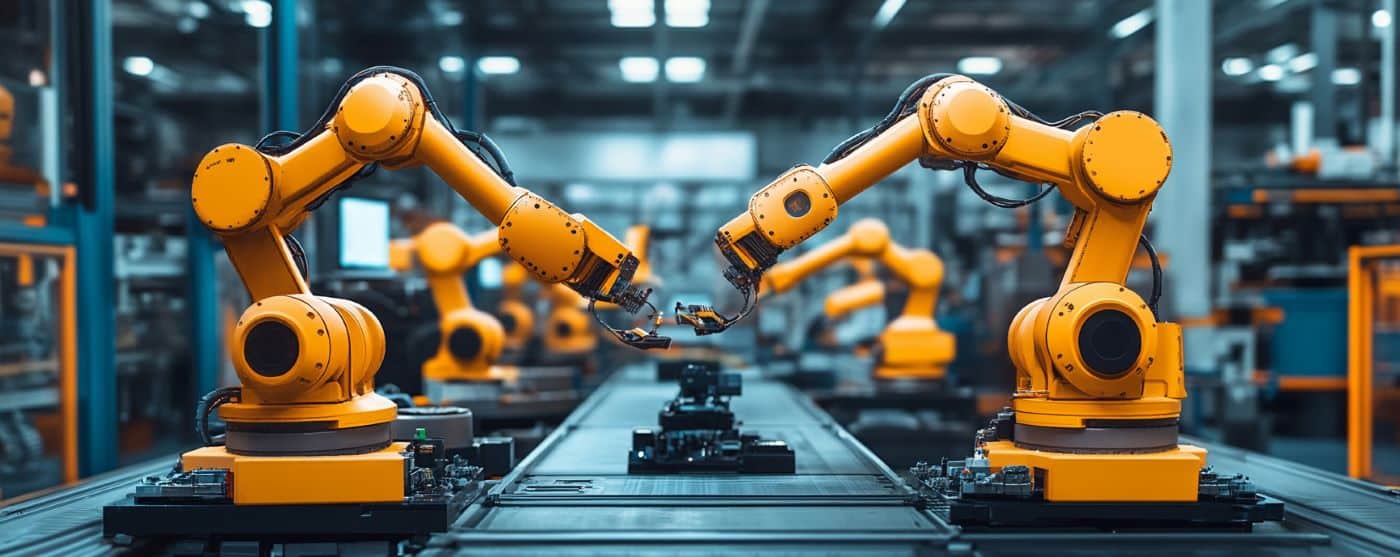
What is the main focus of a Mechatronics Degree?
Mechatronics engineering revolves around the design, construction and operation of intelligent products and systems, stemming from the integration of hardware and software applications. The Japanese engineer Tetsuro Mori developed the name for the field in 1969, while working as an executive engineer at the firm Yaskawa. The field is still evolving and sometimes is still referred to as Asset Management in the industry.
Professionals in this arena develop approaches to industrial problems employing mechanical and electronic solutions and computer applications. They develop products through the integration of diverse technologies for streamlining processes and applications in endeavors like underwater exploration. These engineers create and evaluate factory production lines blending manufacturing and technologies to enhance efficiency.
In addition, they preserve and augment manufacturing designs and processes in applications such as robot floor cleaners.If you are looking for information about Mechatronics and want to speak with colleges and universities about earning your engineering degree, we can help. We work with schools across the nation to inform students of their options for education. Use our directory of schools to request more information today about their programs.
Mechatronic engineers traditionally work in a laboratory, processing plant or engineering office setting, especially among product developers, manufacturing firms, mining or forestry industries, aerospace and defense, government and industry research groups, as well as electrical power facilities. In addition, the skill set is highly desired by prominent global enterprises in the automotive, aerospace and consumer products sectors and in innovative technology firms that manufacture and supply software components and equipment.
Often graduates will establish their own firms or capitalize on research opportunities in the fields of bioengineering or nanotechnology. The demand for mechatronic specialists will continue to grow as more institutions seek to integrate technological innovations in the computer, electronic and sensor areas to enhance product processes and services. Institutions across the globe that have capitalized on mechatronics technology include Bosch, Royal Dutch Shell, FOX Racing, and Keurig Green Mountain.
Earning Your Mechatronics Degree
Mechatronic engineers require at least a Bachelor’s degree, whereby most of these professionals have completed undergraduate studies in mechanical engineering. The field, though, transcends this traditional discipline into a variety of fields of study such as electronics, decision-making theories, and information technology, among others. With a Master’s degree in mechatronic engineering, an individual has the credentials to assume management and more advanced research posts.
Graduate programs often feature traditional classroom instruction with practical industry experience. Coursework traditionally explore practices in automation theory, methodology, and analysis. An example mechatronic engineering class at the Massachusetts Institute of Technology (MIT), for example, instructs the design of mechatronic systems which integrate mechanical, electrical, and control systems engineering.
For those seeking a less rigorous option of entering the field, an associate’s degree in mechatronics can be attained at a community college or technical institution. These 2-year degree programs equip candidates with the skills to assume entry-level positions, whereby they troubleshoot maintenance processes. Classroom instruction typically entails course work in robotic design as well as training in engineering drawing.
Students of mechatronics have gone on to develop many of the “smart” devices that have transformed a medley of industries around the world. From robots and anti-lock brakes to photocopiers and computer drives, mechatronics professionals are changing the way people work and live, according to the American Society of Mechanical Engineers (ASME). The technology is also found in humidity sensitive clothes dryers and windshield wipers as well as in healthcare, agriculture, construction, entertainment, automobiles, and tools for the disabled and elderly communities. These technological innovations reflect the dedication these professionals have to becoming life-long learners.
With a bevy of associations, professional organizations, societies and resources likes the American Society for Engineering Education (ASEE), the Technology Student Association (TSA), and the National Society of Professional Engineers (NSPE), among others, students and seasoned professionals have seamless access to the knowledge and resources necessary to bolster their education and skills as the industry evolves over time.
Organizations such as these also provide mentoring and networking opportunities that have the potential to enhance the prowess of an individual seeking transformative career opportunities and guidance as well as for institutions seeking to attract and nurture talent to their efforts. In addition, esteemed institutions such as MIT offer free online course programs for students and professionals through its Open Course Ware initiative.
Working with a Mechatronics Engineering Degree
Though the US Bureau of Labor Statistics (BLS) does not maintain employment or salary data on mechatronics engineers, it does have statistics for the related industries of mechanical and electrical engineer. According to research at the BLS, demand for these types of professionals should likely experience five percent growth until at least 2022. Moreover, the bureau foresees electrical and electronics engineers to experience four percent growth in their career prospects. In contrast, electrical and electronic engineering technicians will likely see little or no growth over the time period.
Based on O*Net salary data, mechatronic engineers earned a median salary of $92,680. In a state comparison for earning potential, the BLS found that mechanical engineering professionals in California earned the highest salary at $112,100. Professionals in Texas received $98,030 in yearly salary compensation. Engineers in New York and Illinois earned approximately $95,020 in pay annually.
Careers for Mechatronic Engineers
Companies like Harris & Bruno have formed partnerships with schools like Sierra College in California to seamlessly integrate students from the classroom to applying their knowledge to real world mechatronics applications. Markus Fredrickson, a Sierra College student, works part-time in manufacturing at Harris & Bruno.
When he first began his education, he did not have a clear direction for his career. However, the collaborative approach of his university and the private enterprise has provided him with direction and the practical outlet for his skills. He described his work with the firm as a seamless experience bridging his classroom education with real world scenarios.
Many of the parts and systems he encountered in his classroom work echoed the very same components and problems he was asked to solve on the job.
Ultimately, he found his theoretical and practical education as invaluable in facilitating his career advancement. These types of programs reflect the potential for students and companies as they integrate their resources and expertise in growing the industry. This boasts well for both current and prospective professionals in the field and the industry as a whole as more evolutions occur in terms of technology and human resources.
If you would like to learn more about mechatronics or other areas of engineering, contact the schools in our directory to receive more helpful information. We recommend contacting multiple schools to be sure you choose the best one for you!


